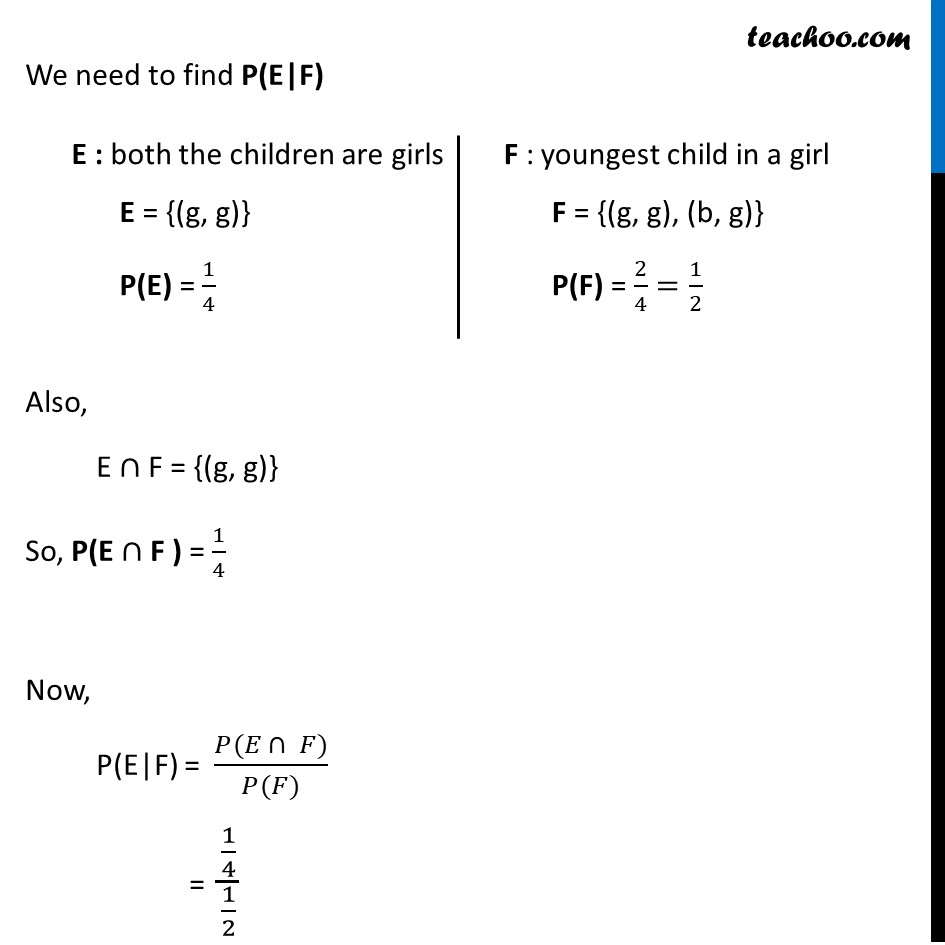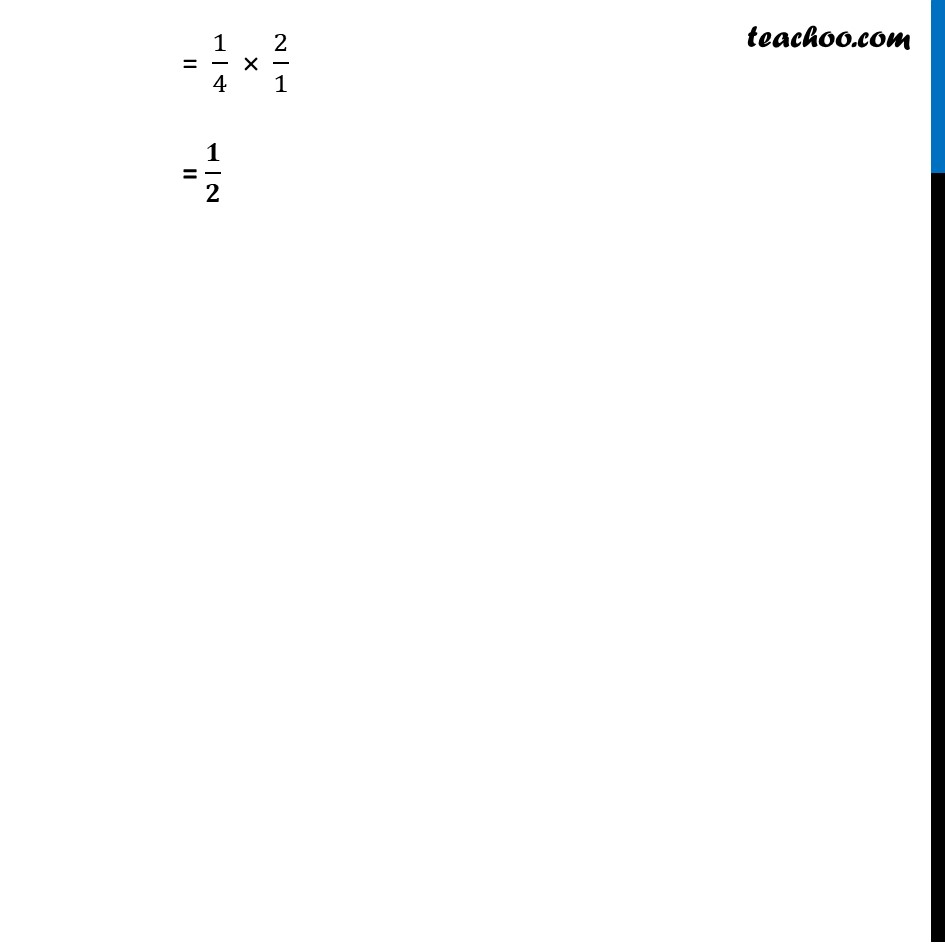




Chapter 13 Class 12 Probability
Chapter 13 Class 12 Probability
Last updated at December 16, 2024 by Teachoo





Transcript
Ex 13.1, 12 Assume that each born child is equally likely to be a boy or a girl. If a family has two children, what is the conditional probability that both are girls given that (ii) at least one is a girl? S = {(g, g), (g, b), (b, g), (b, b)} We need to find the probability that the children are girls, given that at least one is a girl. E : both the children are girls F : at least one child is a girl E = {(g, g)} P(E) = 1/4 F = {(g, g), (g, b), (b, g)} P(F) = 3/4 Also, E ∩ F = {(g, g)} So, P(E ∩ F) = 1/4 Now, P(E|F) = (𝑃(𝐸 ∩ 𝐹))/(𝑃(𝐹)) = (1/4)/(3/4) = 1/4 × 4/3 = 𝟏/𝟑